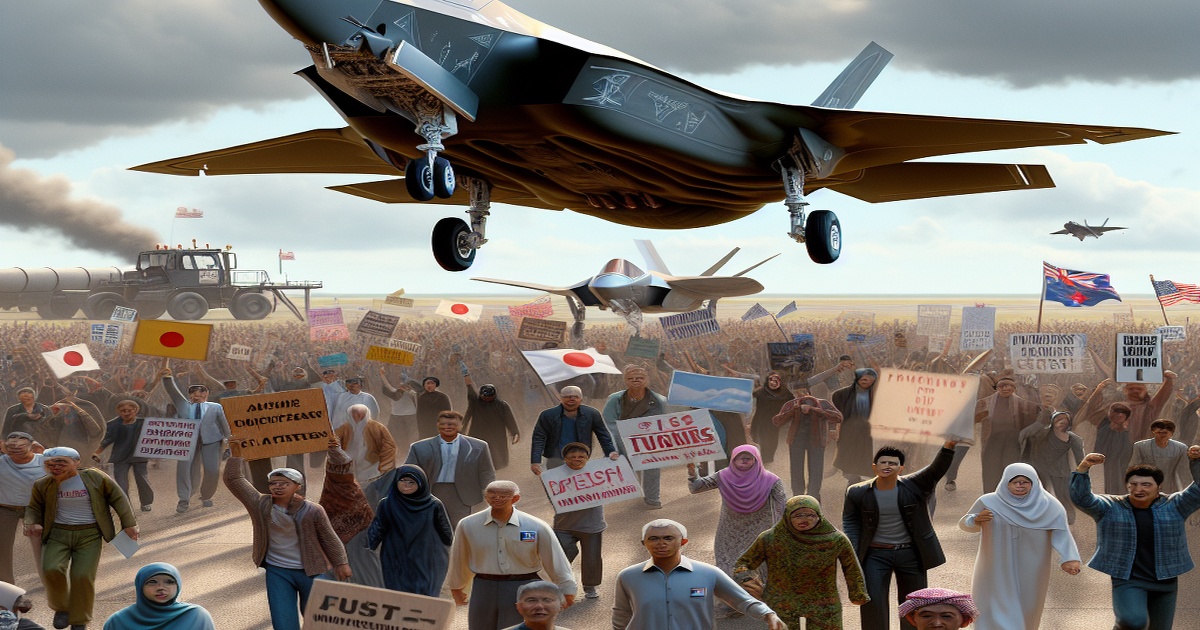The Japan Air Self-Defense Force (JASDF) made a historic move by deploying F-35B stealth fighter jets to the Nyutabaru Air Base in Miyazaki Prefecture, an event that has not occurred since World War II when Japan last had carrier-based fighter aircraft. This deployment enhances Japan's aerial combat capabilities significantly and enables quicker reaction times, potentially altering the balance of peace in the region. Initially slated for a 2024 delivery, the F-35Bs arrived earlier than planned due to delays; three of the four jets flew from Guam with U.S. pilots, while the last jet needed inspection before it could be flown to the base.
The arrival of the F-35B jets has incited protests from local residents worried about the excessive noise generated during flight operations. During one landing on the day of arrival, an F-35B showcased its vertical landing capability, creating a noise level that greatly exceeded typical standards, leading to around 50 demonstrators showing their discontent nearby. The Japanese Ministry of Defense has indicated plans for numerous training flights, including nighttime operations that will further disturb local communities.
Despite the backlash, Japan is pressing forward with the integration of the F-35B into its arsenal due to the advanced stealth technology which reduces radar visibility and its ability to operate from shorter runways. The Japanese Maritime Self-Defense Force intends to deploy these jets on the Kaga and Izumo carrier ships, which are being converted for this purpose. Critics argue this move violates Japan’s pacifist Article 9 and represents a shift from a purely defensive posture to a more offensive military strategy, potentially escalating tensions with neighboring countries.
Military analysts note that the F-35B's capabilities allow Japan to conduct preemptive strikes more effectively, even if airbases are compromised. The jets’ operational advantages, including their capability to operate from limited spaces, empower Japan's military forces, enhancing their surprise attack capabilities. The export of these fighters from the U.S. is viewed as a way to bolster Japan's military prowess, allowing greater collaboration with American forces in the Indo-Pacific region.
This strategic military enhancement comes amid increasing narratives that assert China's growing carrier capabilities pose a threat to Japan. However, some experts argue that Japan’s military modernization efforts are largely framed within the context of countering perceived threats from China, enabling Japan to move beyond the restrictions imposed by its pacifist constitution. The overarching concern remains that Japan’s military initiatives could exacerbate regional security dynamics, challenging the existing international order and drawing attention from the global community.







5 Comments
Matzomaster
Modernization is key! This allows Japan to compete and protect itself.
Rotfront
I am worried for the future. Japan need to protect the people, not fight the people.
Karamba
Japan will not be the same after this decision and neither will the neighbors.
Fuerza
The F-35B is agile, stealthy, and capable. Japan has made a smart choice.
Manolo Noriega
These are good for Japan. They will be able to stay on top of any potential dangers in the land.